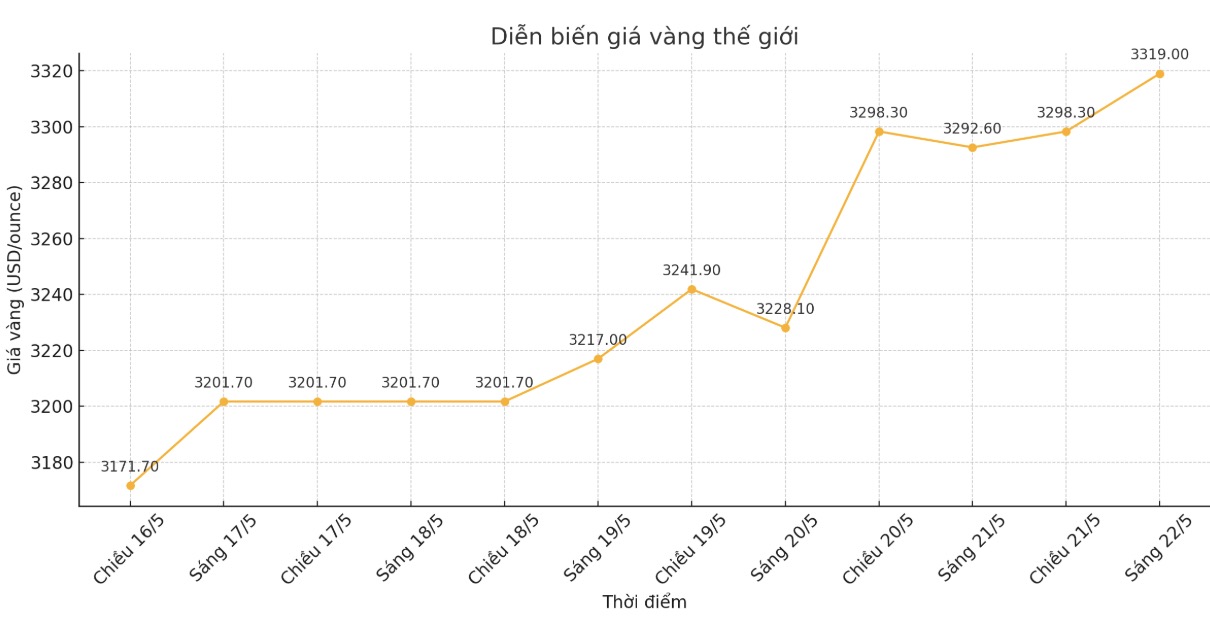Central banks buy net
According to Mr. Joseph Cavatoni - senior market strategist at the World Gold Council (WGC), demand for gold is returning strongly in 2025 as both central banks and investors increase their purchases, in the context of the US facing fiscal tensions, uncertainties and growing skepticism about traditional financial assets.
The picture of gold investment is becoming clearer and stronger. We are seeing the US public debt level not being sustainable and even though the current administration is trying to handle it, it will be a challenging process, Cavatoni said in an interview with Kitco News.
He said that Moody's downgrading of US credit should be considered a warning. This is the third rating agency to do so. This means that assets priced in USD as well as the greenback itself are under pressure and carry long-term risks.

In a recent report, the WGC said that total global demand for gold (including non-bank transactions and reserve capital flows) in the first quarter reached 1,206 tons - the strongest start to the year since 2016. The two highlights are that central banks continue to make strong net purchases and global investors are returning to gold.
ETFs also reversed strongly, led by funds in the US and China. In April alone, ETF inflows into China set a record, even surpassing the total flow of gold ETFs in North America in the first quarter.
Cavatoni believes this is not just a short-term speculative act. Investors are looking back at the asset allocation strategy. The correlation between stocks and bonds is at a rare high level, causing increased demand for asset diversification, and gold is a prominent choice.
Gold plays a safe haven role
Regarding the recent warning of the European Central Bank about risks in the gold derivatives market, Mr. Cavatoni appreciated the content but emphasized that it should refer to the WGC's research: "In all systemic events over the past 20 years, from dot-com bubble to global financial crisis, gold has shown a safe haven role".
Demand from individual investors has also increased, especially in China and India - where gold has always been viewed as an asset to protect long-term prosperity. Although jewelry demand decreased by 21% compared to the same period last year due to high prices, Mr. Cavatoni said: "Current money only shifts from jewelry gold to investment gold like ETFs or gold bars, not disappearing".

In terms of supply, mining in the first quarter of 2025 has been positive, but the amount of recycled gold has not increased significantly. That shows that gold owners are still confident and not willing to sell.
Mr. Cavatoni affirmed that central banks still buy gold regularly: "They are reacting to inflation, geopolitical pieces and the trend of de-dollarization. Gold is a liquid asset, in line with the role of reserves.
He said that emerging countries - the group that buys the most gold - currently only hold about 10-15% of foreign exchange reserves in the form of gold, while developed countries such as the US have a rate of up to 75 80%. This gap shows that there is still much room to increase gold reserves.
In the context of risk assets being over Valued, the market fluctuating and the correlation between stocks and bonds increasing, Mr. Cavatoni affirmed: "Gold is becoming a topic of interest to the investment community again".
When asked about the forecast for gold prices to reach $4,000/ounce, he replied: That is a possible level. Since the beginning of the year, gold has brought in a profit of nearly 25% and the outlook is still very positive.
He also emphasized a bill being considered by the US Congress to remove barriers for mutual funds to invest in gold. This is a big step forward. Whether it is taxes, legal reforms or market education, it is clear that the government is paying great attention to gold.











